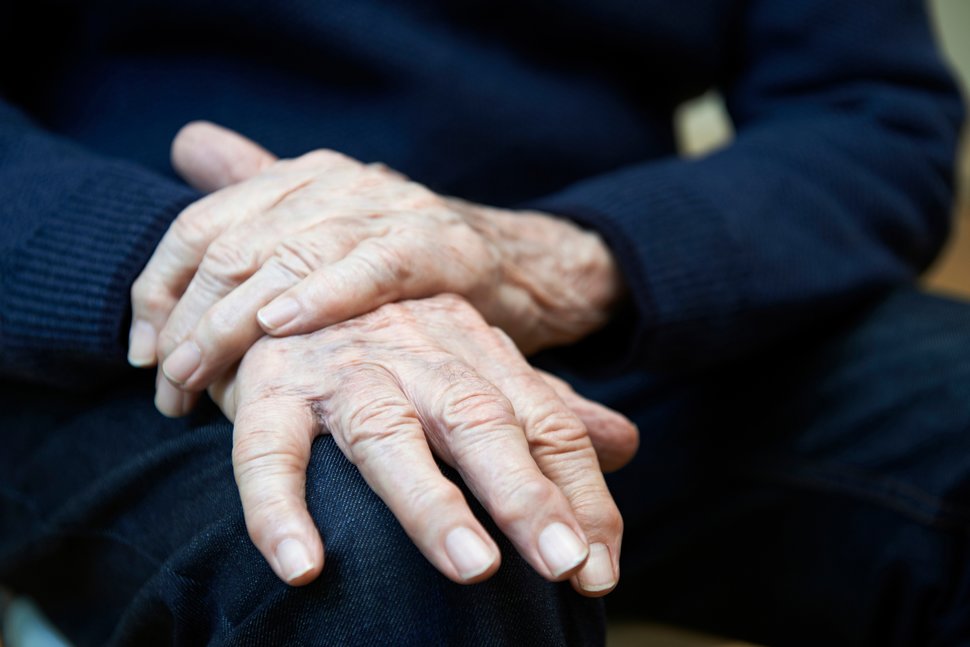Parkinson's disease is a slowly progressing neurodegenerative disease resulting in motor symptoms such as a tremor, slowed movements and gait and balance issues. As the disease progresses, cognitive problems can develop as well. Yet thanks to advances in treatment, people with Parkinson's can live complete, quality lives.April is Parkinson's Disease Awareness Month, and it's with that in mind that I'm excited to look at where the science around Parkinson's disease has come, and how we are on a cusp of treatment and diagnostic breakthroughs. Together with our patients, we as physicians and scientists hope to continue our mission to develop new ways to identify, slow and potentially reverse the effects of Parkinson's disease over the next 10 years.In Parkinson's, specific nerve cells in the brain gradually break down and die, which limits the production of dopamine, the essential neurotransmitter for normal motor function in the human brain. This lack of dopamine alters brain function, causing slow movements and muscle rigidity. Why these cells die remains a mystery, and given the many causes of neurological disorders such as Parkinson's, a precise cause may not be identified.That said, major technological advances have revolutionized approaches to the care of Parkinson's patients. The first hurdle is diagnosing the disease early, before the onset of disabling motor symptoms. Early diagnosis is the key to personalized therapy that can slow disease progression before disability becomes severe. Helping us achieve this, advances in brain imaging techniques allow us to pinpoint the most affected parts of the brain, which can then be targeted by treatment. Maps of brain function obtained with PET and MRI scans allow us to pull back the curtain and track the disease's progression over time. Our group at the Feinstein Institutes for Medical Research in New York also has developed computer algorithms that use imaging for early diagnosis and to track the disease in individual patients. With these tools in hand, we can test the efficacy of new treatments such as stem cell transplants and immunotherapies.The world is now very familiar with the idea of immunotherapies. Think of the COVID-19 vaccine: It's a way to introduce antibodies to the body to help protect against a virus. While there are no vaccines for Parkinson's disease, scientists are working on methods to administer antibodies that target affected areas of the brain, thereby halting disease progression.Lastly, there is growing interest in bioelectronic medicine – techniques to stimulate or inhibit critical brain circuits, thereby modulating the effects of disease on the whole brain. While deep brain stimulation has been used to treat Parkinson's for over 20 years, novel applications of the technology continue to be developed in conjunction with the imaging tools.These developments are important, but all require further investigation – and the participation of volunteers in research. Many of the new therapies are in the clinical trial phase, and it is imperative that the Parkinson's diagnosis be confirmed before patient enrollment. Apart from affirming the diagnosis, patient participation in imaging studies is essential for the objective assessment of treatment outcomes. Indeed, the translation of drugs from the experimental laboratory to the doctor's office will remain limited without considering new imaging measures, as well as genetic biomarkers, to help gauge their effects on disease pathways in individual patients.As we take a moment to pause and think about Parkinson's disease this month, I encourage you to sign up to be a participant in a research study. If you or someone you know has been diagnosed with Parkinson's disease, consider helping yourself and those who may become diagnosed in the future by volunteering for an imaging study at the Feinstein Institutes. If you are interested in clinical trials, check out the government's database at ClinicalTrials.gov. With your help, coupled with the advancements in technology and medical science, we might be able to slow or even stop the progression of this disabling disorder within the next decade.
Commentary: Progress in Fighting Parkinson’s Disease
0
0
SHARES
8
VIEWS
Leave a Reply Cancel reply
BROWSE BY CATEGORIES
BROWSE BY TOPICS
Alexa Lardieri
Associated Press
Best States
Best Stocks
Biden
business
Business News
China
Collections: Business
Collections: Top News
Collections: US
coronavirus
Donald
economy
education
Education Lab
elections
Financial Advisors
foreign policy
health
Healthiest Communities
Healthiest Communities Health News
Health News
infectious diseases
Investing 101
Joe
Lisa Hagen
lung disease
National News
News
Paul D. Shinkman
personal finance
picks
Politics
public health
Russia
Stock Market News
Susan Milligan
Trump
United States
vaccines
Washington Whispers
world
world news
World Report
Archives
- June 2022
- May 2022
- April 2022
- March 2022
- February 2022
- January 2022
- December 2021
- November 2021
- October 2021
- September 2021
- August 2021
- July 2021
- June 2021
- May 2021
- April 2021
- March 2021
- February 2021
- January 2021
- December 2020
- November 2020
- October 2020
- September 2020
- August 2020
- July 2020
- June 2020
- May 2020
Nsapk.com is the driving force behind decisions that largely define the quality of our readers’ and users’ lives.
- Trending
- Comments
- Latest
Biden to Faucet Former Sen. Invoice Nelson to Lead NASA
April 11, 2021
Neera Tanden Withdraws Her Nomination for OMB Director
August 17, 2021
Copyright @ 2021 Nsapk.com. All rights reserved.









